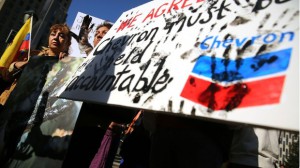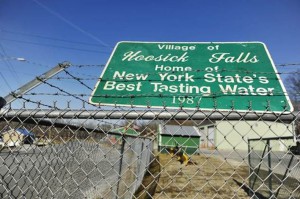New York Appellate Courts Clarify Defense-Friendly Standards on Causation
By Mohammad Haque, New York on August 1, 2022

Recently, New York’s highest court and the intermediary appellate court (Appellate Division: First Department) that hears all appeals arising from New York City’s Asbestos Litigation (“NYCAL”) have ruled that it is a plaintiff’s burden to present evidence of (1) what base line exposure is necessary to cause disease; and (2) that the exposure experienced from each product reached, or exceeded, that level sufficient to cause the disease. Furthermore, common assertions by plaintiff experts like “no safe dose” and “all asbestos is dangerous” were ruled not sufficient to meet this burden.
These were set out in decision of New York’s highest court, the Court of Appeals, in Nemeth, which set aside a jury verdict (and in which our firm submitted an amicus brief).
Although we have recognized that in any given case it may be “difficult, if not impossible, to quantify a plaintiff’s past exposure” to a toxin (Sean R., 26 NY3d at 812), our standard itself is not “impossible” for plaintiffs to meet (dissenting op at 25). We must, as always, strike a balance between the need to exclude “unreliable or speculative information” as to causation with our obligation to ensure that we have not set “an insurmountable standard that would effectively deprive toxic tort plaintiffs of their day in court” (Parker, 7 NY3d at 447). The requirement that plaintiff establish, using expert testimony based on generally accepted methodologies, sufficient exposure to a toxin to cause the claimed illness strikes the appropriate balance (see Cornell, 22 NY3d at 784). The fault here is not in our standard, but in plaintiff’s proof.
Nemeth v. Brenntag N. Am., No. 24, 2022 WL 1217464, at *1 (N.Y. Apr. 26, 2022)
In Olsen, the First Department set aside one of the most massive NYCAL jury awards to date: after remittitur, $15 million in compensatory damages and $105 million in punitive damages. The First Department held that plaintiffs failed, as a matter of law, to carry their burden to establish sufficient exposure to defendant’s talc product to cause plaintiff’s mesothelioma.
Even if it is assumed that plaintiffs presented sufficient evidence to support their mineral expert’s estimate of the amount of asbestos to which plaintiff Donna Olson was exposed each time she used J & J’s talcum powder products, plaintiffs’ medical expert never set forth a scientific expression of the minimum lifetime exposure to asbestos that would have been sufficient to cause mesothelioma, the disease in question.
Matter of New York City Asbestos Litig.(Olsen), No. 14875, 2022 WL 2812015, at *1 (1st Dept. 2022).
Olsen was the first NYCAL verdict overturned on appeal following Nemeth. However, the First Department did not stop there. It issued three more decisions clarifying and extending Nemeth to motions for summary judgment—contrary to the plaintiffs’ argument throughout New York that Nemeth applied only to post-verdict rulings.
All three cases involved claimants diagnosed with lung cancer who alleged asbestos exposure from Amtico floor tiles. The court confronted the same argument and experts on causation in each case.
In reversing the lower court’s denial of defendant’s motions for summary judgment, the First Department held that defendant made out a prima facie case that plaintiffs were not exposed to sufficient quantities of respirable asbestos from defendant’s product to cause their disease, based on a 2007 simulation study showing that cutting, scoring and disruption of its floor tile did not produce sufficient airborne asbestos above ambient levels to cause the disease.
The court held that plaintiffs failed to raise an issue of fact by failing to provide any quantification and merely arguing “no safe” levels:
Dr. Ginsburg generally concludes that “[t]here is no safe minimum level of exposure to asbestos with respect to lung cancer” and that “manipulation of asbestos containing floor tiles can result in release of asbestos fibers into the workers’ environment that are exponentially greater than the ambient level of exposure.” He also states that the asbestos process releases “visible dust” and that such dust is “certainly in dangerous concentration.” However, Nemeth holds that such broad pronouncements and conclusions will not satisfy a plaintiff’s causation burden, which is to show the levels of asbestos that the plaintiff was exposed to and that the levels are known to cause lung cancer. Likewise, to the extent Dr. Ginsberg’s [sic] conclusions are based upon the presence of visible dust emanating from an asbestos-containing product, this theory fails to satisfy a plaintiff’s burden on causation in asbestos cases. Id.
Dyer v. Amchem Prod. Inc., No. 13739, 2022 WL 2811995, at *1 (1st Dept. 2022).
The court rejected plaintiffs’ argument that defense-funded experiments invalidates their conclusions, particularly given that “[p]laintiff offered no expert to counter ABI’s calculation of decedent’s cumulative lifetime exposure, and thus no question of fact was raised as to its validity.” Killian v. A.C. & S., Inc., (Grunert), No. 114345/02, 2022 WL 2812016, at *1 (1st Dept. 2022). Although Dr. Ginsberg pointed to simulation studies measuring an average level of airborne asbestos as high as 0.27 f/cc from floor tile work, the court held that he did not provide any correlation between the asbestos fiber levels to which plaintiff may have been exposed and the amount of inhaled asbestos that would have caused decedent’s lung cancer. Pomponi v. A.O. Smith Water Prod. Co., No. 14982, 2022 WL 2811997, at *1 (1st Dept. 2022).
In each of these four cases, the First Department made clear that a plaintiff cannot establish his or her burden at trial or summary judgment (after defendant meets its initial prima facie burden), by relying on the generalized expert opinions that exposure to a toxin is “excessive” or “far more” than others and, therefore, sufficient to cause a disease. The court needs to be presented with actual quantification of the level of asbestos exposure need to cause the disease at issue and that plaintiff’s inhalation of asbestos from defendant’s product met or surpassed that level.

 The majority opinion is sparse, only two sentences and sixty-eight words long. A concurring opinion by Judge Wilson, however, is more enlightening. Judge Wilson held that while there was no dispute that raw chrysotile asbestos carries increased risk of mesothelioma, plaintiffs did not submit any proof that chrysotile asbestos, as contained in Ford’s friction products, posed any causal relationship to disease. Ford’s experts set forth the “Forsterite defense” – that as a result of high heat in manufacturing and braking, any chrysotile in friction products would be converted into the “biologically inert” substance Forsterite. Plaintiffs did not produce an expert to rebut this opinion. Instead, plaintiff’s own expert conceded that “no one knows whether the friction product dust to which Mr. Juni was exposed when replacing the used products was toxic.”
The majority opinion is sparse, only two sentences and sixty-eight words long. A concurring opinion by Judge Wilson, however, is more enlightening. Judge Wilson held that while there was no dispute that raw chrysotile asbestos carries increased risk of mesothelioma, plaintiffs did not submit any proof that chrysotile asbestos, as contained in Ford’s friction products, posed any causal relationship to disease. Ford’s experts set forth the “Forsterite defense” – that as a result of high heat in manufacturing and braking, any chrysotile in friction products would be converted into the “biologically inert” substance Forsterite. Plaintiffs did not produce an expert to rebut this opinion. Instead, plaintiff’s own expert conceded that “no one knows whether the friction product dust to which Mr. Juni was exposed when replacing the used products was toxic.” Although some mediators have no doubt engaged in blatant conflict of interest, coercive behavior or outright fraud, these incidents are thankfully infrequent. In a mediation proceeding in which a client is represented by counsel, counsel can simply terminate an improper or abusive mediation by walking out with the client. However, this is probably not what the nervous client wants to hear from the lawyer before the mediation begins.
Although some mediators have no doubt engaged in blatant conflict of interest, coercive behavior or outright fraud, these incidents are thankfully infrequent. In a mediation proceeding in which a client is represented by counsel, counsel can simply terminate an improper or abusive mediation by walking out with the client. However, this is probably not what the nervous client wants to hear from the lawyer before the mediation begins. The Second Circuit’s decision will provide legal scholars much to discuss. After all, Donziger’s attorneys attacked the decision as unprecedented in that the trial court allowed Chevron, which had lost its case in Ecuador, to use a U.S. district court to attack the foreign damages award. However, at its roots, the Donziger RICO litigation was not really about issues such as jurisdiction or the enforceability of foreign judgments. Rather, it was about Donziger and his legal team’s brazen violations of ethics and norms when it prosecuted the Chevron case in Ecuador. The Second Circuit’s decision demonstrates that the court simply could not abide the evidence of legal misconduct. Specific instances of ethical misconduct by Donziger cited by the Second Circuit include the following examples:
The Second Circuit’s decision will provide legal scholars much to discuss. After all, Donziger’s attorneys attacked the decision as unprecedented in that the trial court allowed Chevron, which had lost its case in Ecuador, to use a U.S. district court to attack the foreign damages award. However, at its roots, the Donziger RICO litigation was not really about issues such as jurisdiction or the enforceability of foreign judgments. Rather, it was about Donziger and his legal team’s brazen violations of ethics and norms when it prosecuted the Chevron case in Ecuador. The Second Circuit’s decision demonstrates that the court simply could not abide the evidence of legal misconduct. Specific instances of ethical misconduct by Donziger cited by the Second Circuit include the following examples: The new law resurrects previously time-barred claims. Any time a site is designated a superfund site, potential plaintiffs will now have a new three-year window to bring a personal injury action related to the site. Corporate entities that have been identified as responsible parties at inactive hazardous waste disposal sites may find themselves at increased risk for alleged toxic exposures that may have occurred decades ago. The new law has the potential to generate an enormous windfall for the plaintiff bar.
The new law resurrects previously time-barred claims. Any time a site is designated a superfund site, potential plaintiffs will now have a new three-year window to bring a personal injury action related to the site. Corporate entities that have been identified as responsible parties at inactive hazardous waste disposal sites may find themselves at increased risk for alleged toxic exposures that may have occurred decades ago. The new law has the potential to generate an enormous windfall for the plaintiff bar.